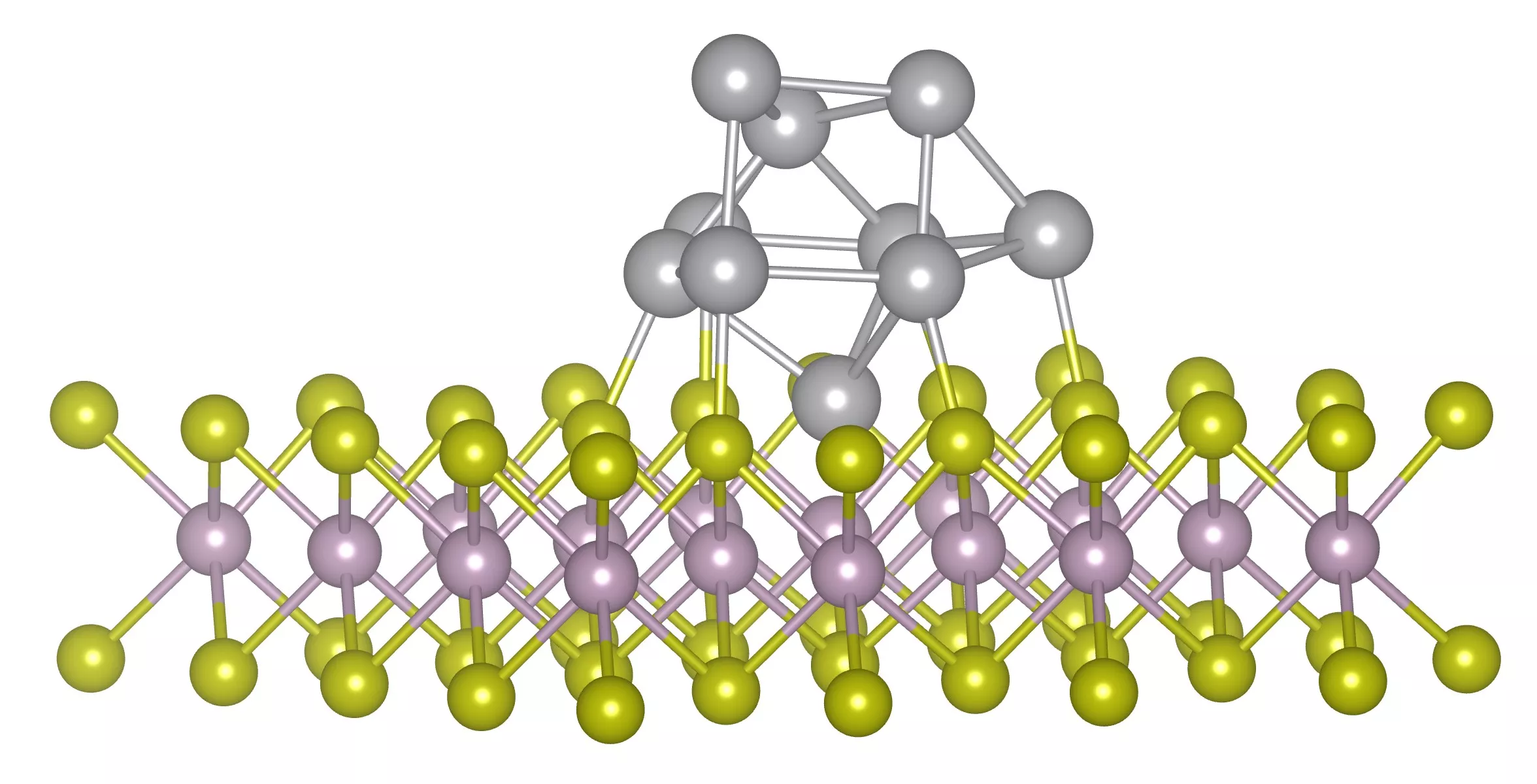Researchers at the Institute of Technical Physics and Materials Science of the HUN-REN Centre for Energy Research (HUN-REN EK-CER) are investigating the electrical, magnetic, and catalytic properties of metal nanoclusters with novel structures stabilised by two-dimensional crystal carriers. These hybrid materials, based on two-dimensional crystals and metal nanoclusters, are expected to be highly efficient catalysts for hydrogen evolution.
Engineering the structure of materials with atomic precision offers greater opportunities than ever before to control their properties. The role of metal nanoparticles is key in a wide range of applications, from infocommunication technologies to catalysts and medical applications. Their properties are closely linked to the atomic-scale details of their structure, so by slightly modifying or distorting their structure, they can be endowed with entirely new ‒ and often useful ‒ properties.
Researchers at the Laboratory of Nanostructures, operating within the Institute of Technical Physics and Materials Science at HUN-REN EK-CER, are collaborating with the Quantum Technology Institute of the Korea Research Institute of Standards and Science to investigate the interaction of various metal nanoparticles (nanoclusters) with two-dimensional crystals. They synthesise metal nanoclusters with novel atomic structures that do not exist (are not stable) in free-standing form or on the surface of other substrates.
As a first step, the researchers have further developed and optimised the synthesis of two-dimensional molybdenum disulphide (MoS2) crystals on graphite substrate that will act as support for the metal nanoclusters. A new method for the electrochemical deposition of platinum (Pt) nanocrystals on the surface of two-dimensional MoS2 layers has also been developed and optimised. The results are expected to lead to significant advances in areas such as high-efficiency and low-cost catalysts for green hydrogen production, or ultra-high density magnetic data storage.
The project is supported by the National Research, Development and Innovation Fund.

Pt cluster with novel atomic structure emerging on the surface of a two-dimensional MoS2 crystal.